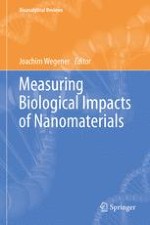2016 | OriginalPaper | Buchkapitel
Probing the Cytotoxicity of Nanoparticles: Experimental Pitfalls and Artifacts
verfasst von : Jenny Domey, Lisa Haslauer, Ina Grau, Claudia Strobel, Melanie Kettering, Ingrid Hilger
Erschienen in: Measuring Biological Impacts of Nanomaterials
Aktivieren Sie unsere intelligente Suche, um passende Fachinhalte oder Patente zu finden.
Wählen Sie Textabschnitte aus um mit Künstlicher Intelligenz passenden Patente zu finden. powered by
Markieren Sie Textabschnitte, um KI-gestützt weitere passende Inhalte zu finden. powered by
